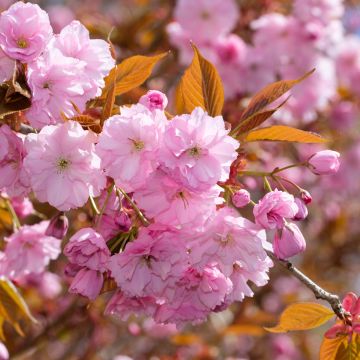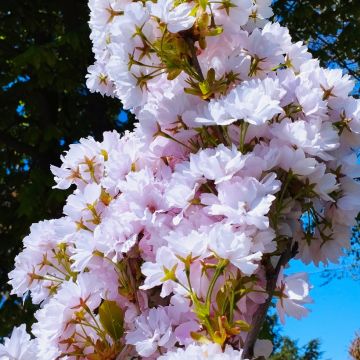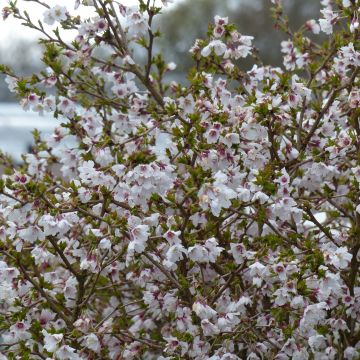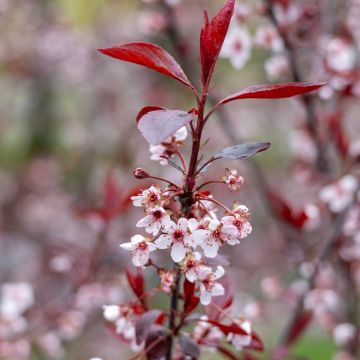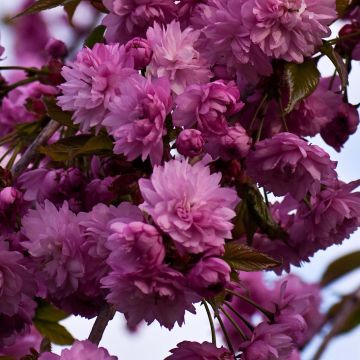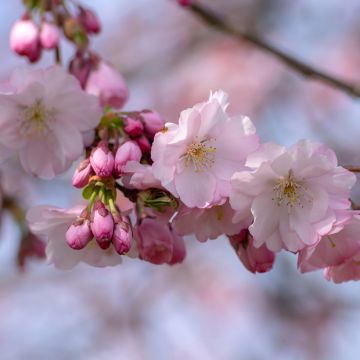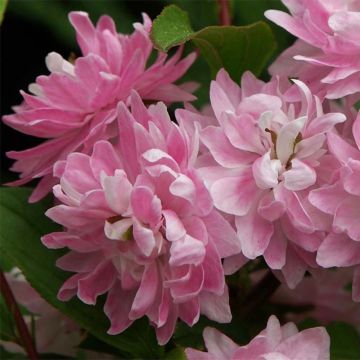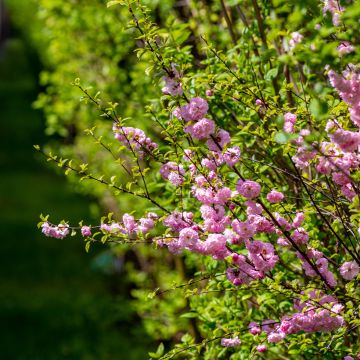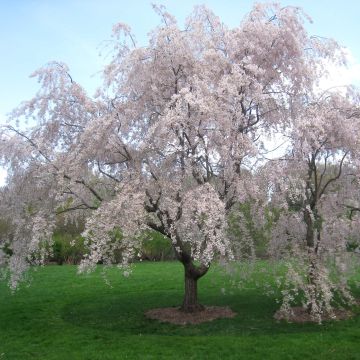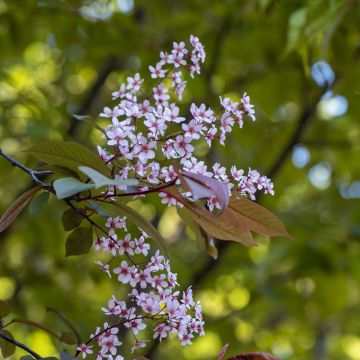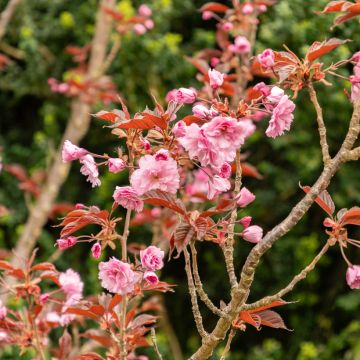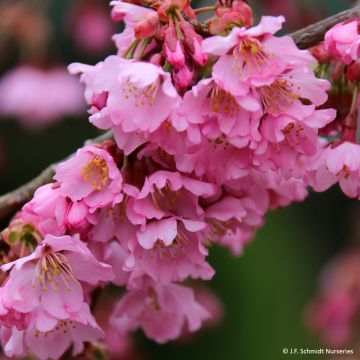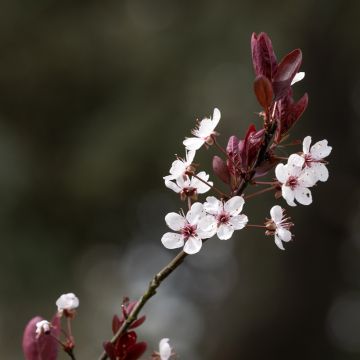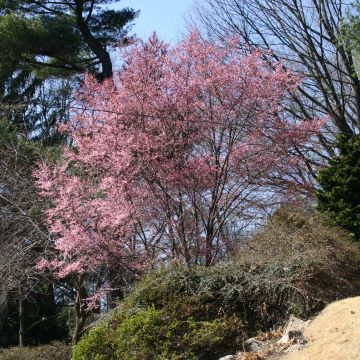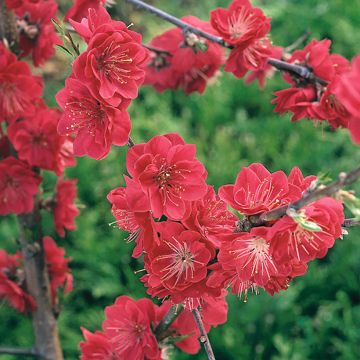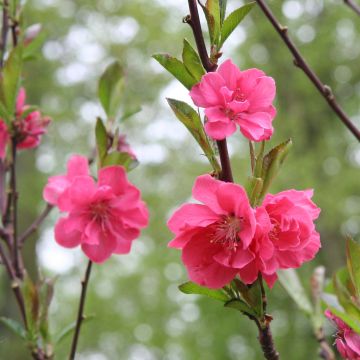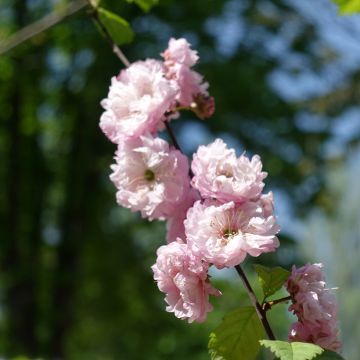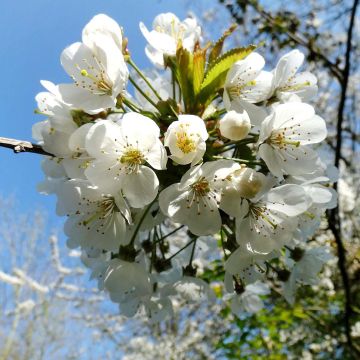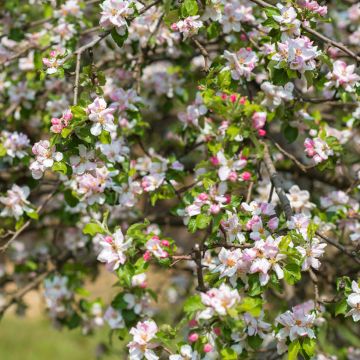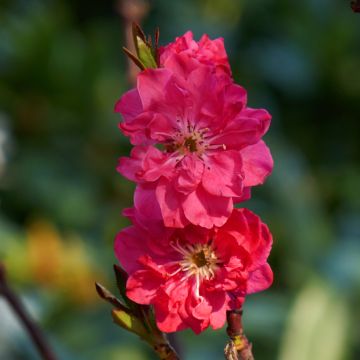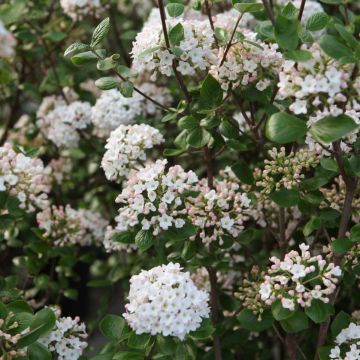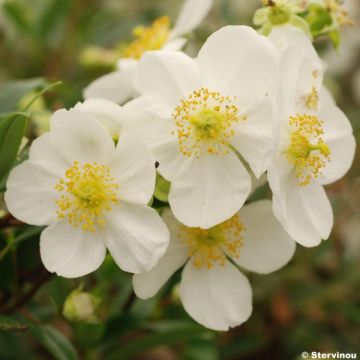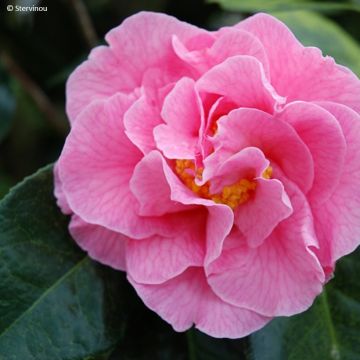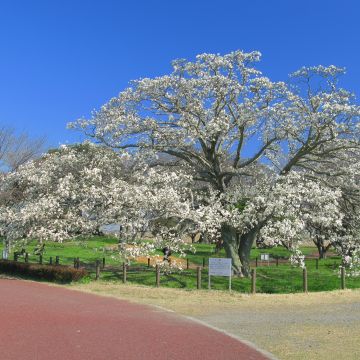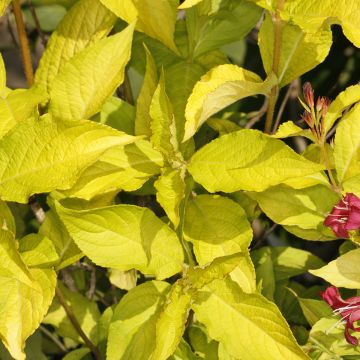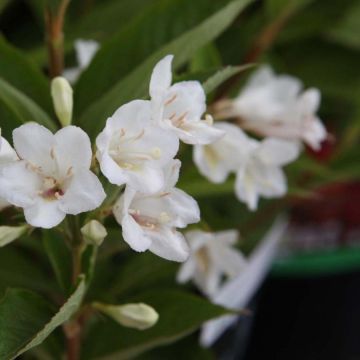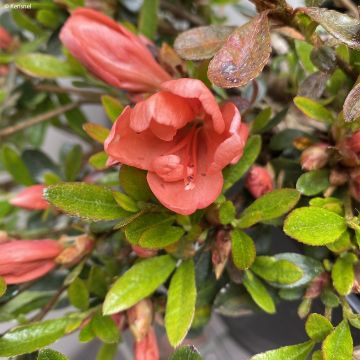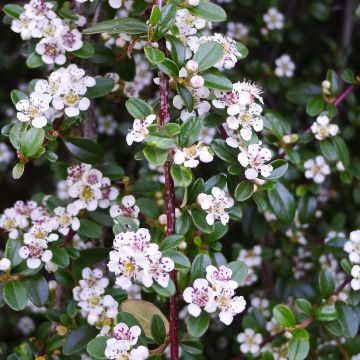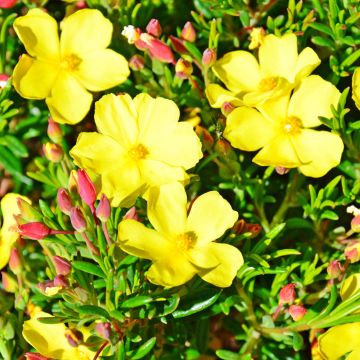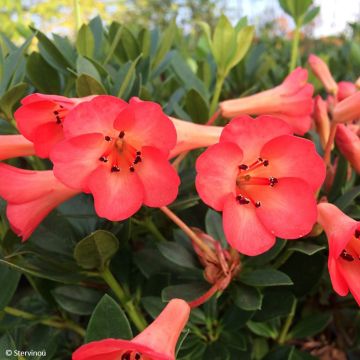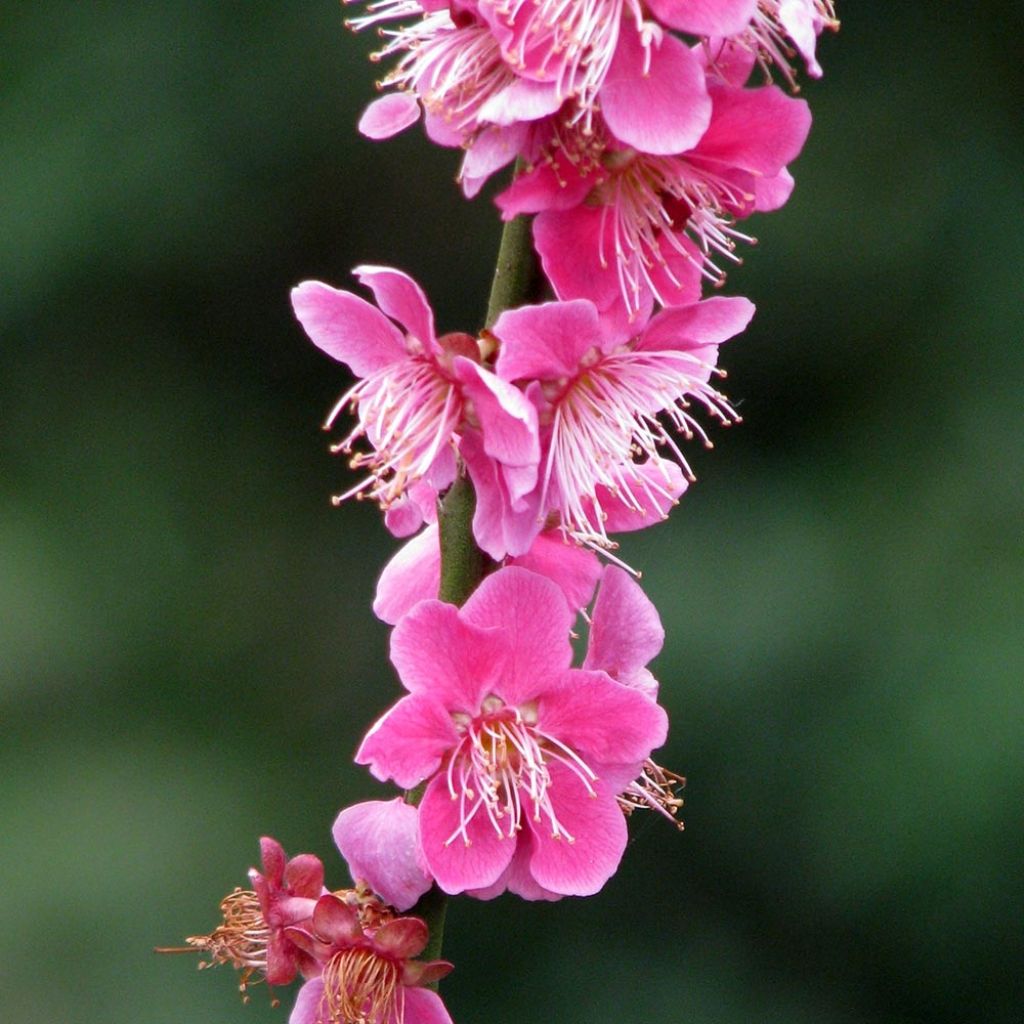

Prunus mume Beni Chidori
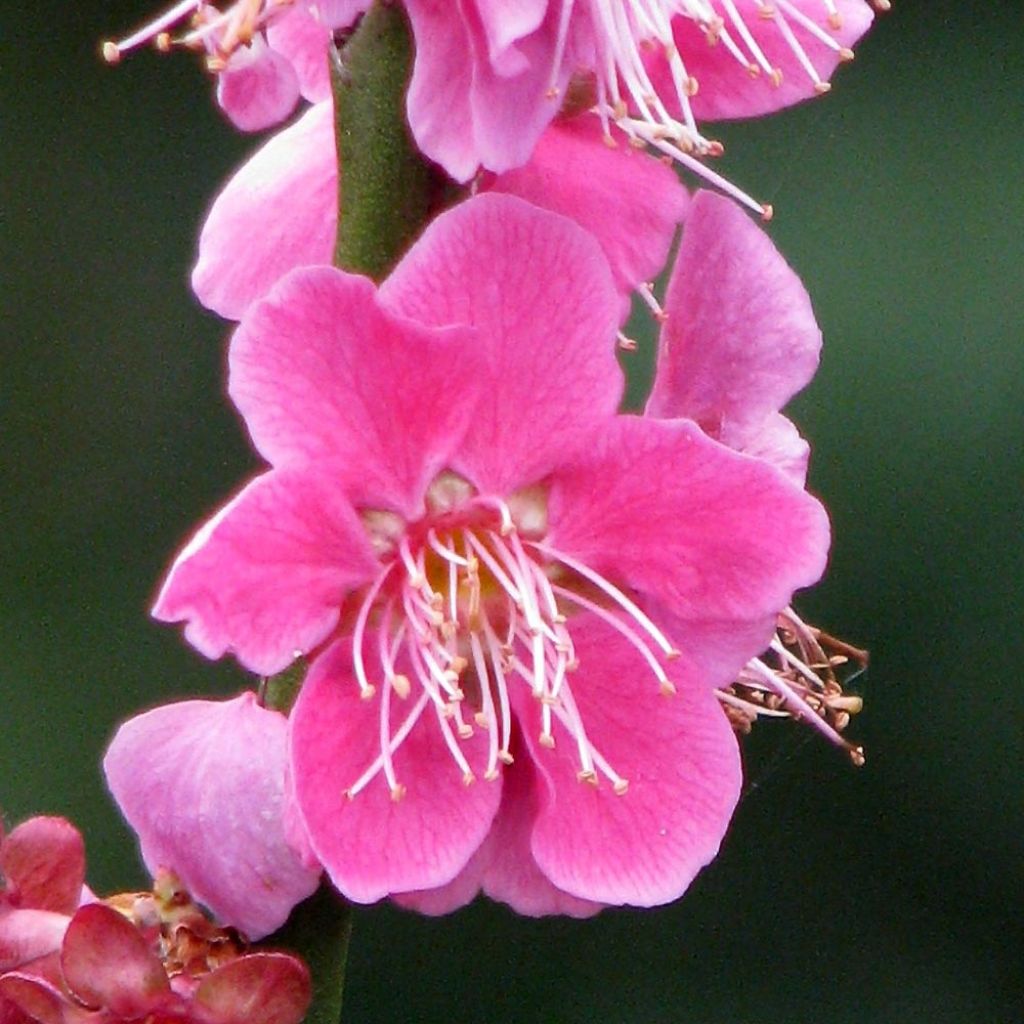

Prunus mume Beni Chidori
Prunus mume Beni Chidori
Prunus mume Beni Chidori
Japanese Apricot
Wonderful naked.
Yves, 17/02/2020
Why not try an alternative variety in stock?
View all →This plant carries a 24 months recovery warranty
More information
We guarantee the quality of our plants for a full growing cycle, and will replace at our expense any plant that fails to recover under normal climatic and planting conditions.
From €5.90 for pickup delivery and €6.90 for home delivery
Express home delivery from €8.90.
Delivery to Corse prohibited: UE law prohibits the import of this plant from mainland France to Corse as part of the fight against Xylella fastidiosa. Please accept our sincere apologies.
More information

Does this plant fit my garden?
Set up your Plantfit profile →
Description
Prunus mume 'Beni Shidori' is a compact variety, ornamental with its early flowering on bare wood, with delicate bright carmine pink single flowers, well scented and topped with long white stamens. This small tree has a spreading, rounded habit and bears fine, airy and elegant branches, highlighted by its silvery grey bark. Its flowering occurs very early in February-March before the appearance of its large deciduous leaves which are shiny dark green. Its small green-yellow fruits, resembling plums in appearance, colour the branches from late May. They are edible but have a quite acidic and bitter taste. Easy to grow in ordinary to rich, deep, well-drained and moist soil, in full sun. Hardy beyond -15°C (5°F), plant it in a sheltered position away from cold winds which could compromise its flowering. It is a variety whose size is perfectly suited for smaller gardens, either isolated, in the back of a shrub bed or in a large pot on a patio.
Japanese apricot 'Beni Shidori' is one of the main cultivars of Prunus mume, distinguished by its very compact growth and early flowering in bright carmine pink and scented. All these small trees belong to the large family of Rosaceae and are widespread in China and Japan where their fruits are used for culinary preparations, notably Japanese plum wine. Prunus mume is a deciduous tree of small to medium size, reaching 6 to 10 metres (20 to 33 feet), displaying an airy, highly graphic silhouette. Its winter flowering is spectacular and very graceful. The 'Beni Shidori' cultivar, smaller in size, reaches an average height of 3 to 5 metres (10 to 16 feet) and a width of 3 to 4 metres. It develops a rounded habit with widely spreading branches, covered with a shining silvery grey bark. Flowering takes place in February-March, more or less early depending on the region. The single flowers, solitary or in clusters of 2, have 5 rounded petals and are suspended by a short peduncle. They open in a bright carmine pink, with corollas measuring 2 to 3 cm (1in) in diameter. The flowers, scented and nectar-rich, are followed by the formation of small round fruits of yellow-green colour, bitter in taste but edible. The deciduous foliage is composed of alternate, shiny dark green leaves, broadly ovate and toothed, measuring 6 to 10 cm (2 to 4in) long.
Its small size and graceful habit, enhanced by silvery branches, make this Japanese apricot suitable for being planted as a specimen. Dazzling from the first beautiful days of spring, requiring very little maintenance, this small tree is suitable for small gardens, where it will be particularly highlighted in the center of a bed of perennials whose flowering will take over, from spring to summer. Perfectly hardy, it can be grown in many regions, but dislikes compact and clay soils or arid situations. For example, in a large mixed hedge or in a bed, it can be associated with other flowering cherry trees, ornamental apple trees, flowering peach trees, Chinese almond tree, hawthorns, Japanese apricot (Prunus mume)... A carpet of blue hyacinths, liverworts or blue grape hyacinths would be very effective at its base.
Report an error about the product description
Prunus mume Beni Chidori in pictures
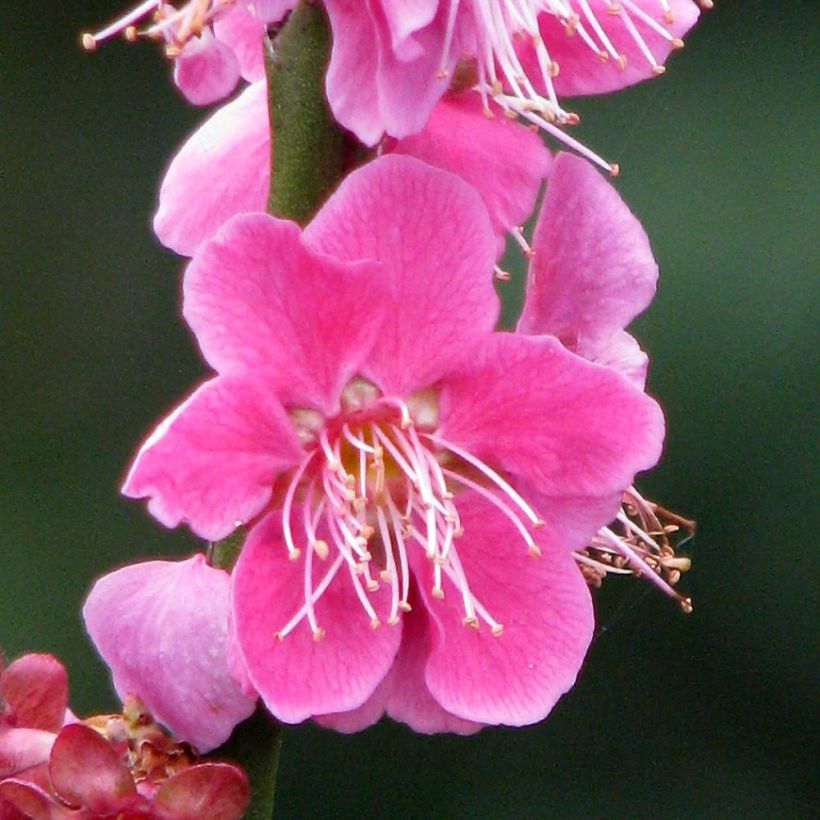

Plant habit
Flowering
Foliage
Botanical data
Prunus
mume
Beni Chidori
Rosaceae
Japanese Apricot
Cultivar or hybrid
Other Prunus
Planting and care
Prunus mume 'Beni Chidori' thrives in full sun or partial shade in a regular to rich, fairly deep, moist which is in well-drained soil, preferably neutral to slightly acidic. Only water during abnormally dry and hot weather. When planting, mix your soil with compost at a ratio of 50%. Dig a large planting hole. Apply a flowering shrub fertiliser every spring. It is preferable to place the Prunus in a sheltered location from dry and cold winds, to enjoy its early flowering. This compact and dwarf variety can also be grown in a large pot or container.
Planting period
Intended location
Care
-
, onOrder confirmed
Reply from on Promesse de fleurs
Spring-flowering shrubs
Haven't found what you were looking for?
Hardiness is the lowest winter temperature a plant can endure without suffering serious damage or even dying. However, hardiness is affected by location (a sheltered area, such as a patio), protection (winter cover) and soil type (hardiness is improved by well-drained soil).

Photo Sharing Terms & Conditions
In order to encourage gardeners to interact and share their experiences, Promesse de fleurs offers various media enabling content to be uploaded onto its Site - in particular via the ‘Photo sharing’ module.
The User agrees to refrain from:
- Posting any content that is illegal, prejudicial, insulting, racist, inciteful to hatred, revisionist, contrary to public decency, that infringes on privacy or on the privacy rights of third parties, in particular the publicity rights of persons and goods, intellectual property rights, or the right to privacy.
- Submitting content on behalf of a third party;
- Impersonate the identity of a third party and/or publish any personal information about a third party;
In general, the User undertakes to refrain from any unethical behaviour.
All Content (in particular text, comments, files, images, photos, videos, creative works, etc.), which may be subject to property or intellectual property rights, image or other private rights, shall remain the property of the User, subject to the limited rights granted by the terms of the licence granted by Promesse de fleurs as stated below. Users are at liberty to publish or not to publish such Content on the Site, notably via the ‘Photo Sharing’ facility, and accept that this Content shall be made public and freely accessible, notably on the Internet.
Users further acknowledge, undertake to have ,and guarantee that they hold all necessary rights and permissions to publish such material on the Site, in particular with regard to the legislation in force pertaining to any privacy, property, intellectual property, image, or contractual rights, or rights of any other nature. By publishing such Content on the Site, Users acknowledge accepting full liability as publishers of the Content within the meaning of the law, and grant Promesse de fleurs, free of charge, an inclusive, worldwide licence for the said Content for the entire duration of its publication, including all reproduction, representation, up/downloading, displaying, performing, transmission, and storage rights.
Users also grant permission for their name to be linked to the Content and accept that this link may not always be made available.
By engaging in posting material, Users consent to their Content becoming automatically accessible on the Internet, in particular on other sites and/or blogs and/or web pages of the Promesse de fleurs site, including in particular social pages and the Promesse de fleurs catalogue.
Users may secure the removal of entrusted content free of charge by issuing a simple request via our contact form.
The flowering period indicated on our website applies to countries and regions located in USDA zone 8 (France, the United Kingdom, Ireland, the Netherlands, etc.)
It will vary according to where you live:
- In zones 9 to 10 (Italy, Spain, Greece, etc.), flowering will occur about 2 to 4 weeks earlier.
- In zones 6 to 7 (Germany, Poland, Slovenia, and lower mountainous regions), flowering will be delayed by 2 to 3 weeks.
- In zone 5 (Central Europe, Scandinavia), blooming will be delayed by 3 to 5 weeks.
In temperate climates, pruning of spring-flowering shrubs (forsythia, spireas, etc.) should be done just after flowering.
Pruning of summer-flowering shrubs (Indian Lilac, Perovskia, etc.) can be done in winter or spring.
In cold regions as well as with frost-sensitive plants, avoid pruning too early when severe frosts may still occur.
The planting period indicated on our website applies to countries and regions located in USDA zone 8 (France, United Kingdom, Ireland, Netherlands).
It will vary according to where you live:
- In Mediterranean zones (Marseille, Madrid, Milan, etc.), autumn and winter are the best planting periods.
- In continental zones (Strasbourg, Munich, Vienna, etc.), delay planting by 2 to 3 weeks in spring and bring it forward by 2 to 4 weeks in autumn.
- In mountainous regions (the Alps, Pyrenees, Carpathians, etc.), it is best to plant in late spring (May-June) or late summer (August-September).
The harvesting period indicated on our website applies to countries and regions in USDA zone 8 (France, England, Ireland, the Netherlands).
In colder areas (Scandinavia, Poland, Austria...) fruit and vegetable harvests are likely to be delayed by 3-4 weeks.
In warmer areas (Italy, Spain, Greece, etc.), harvesting will probably take place earlier, depending on weather conditions.
The sowing periods indicated on our website apply to countries and regions within USDA Zone 8 (France, UK, Ireland, Netherlands).
In colder areas (Scandinavia, Poland, Austria...), delay any outdoor sowing by 3-4 weeks, or sow under glass.
In warmer climes (Italy, Spain, Greece, etc.), bring outdoor sowing forward by a few weeks.

































